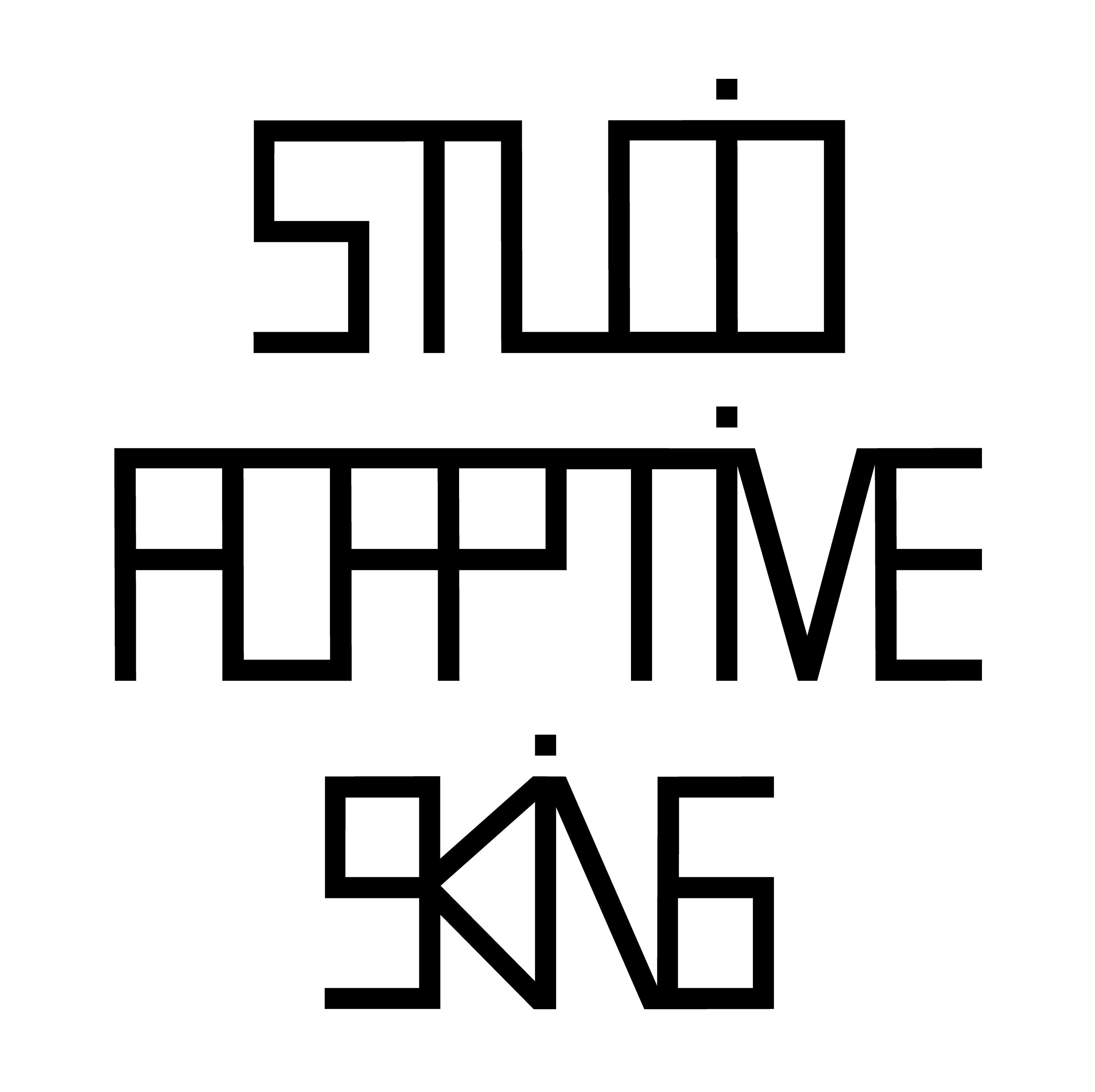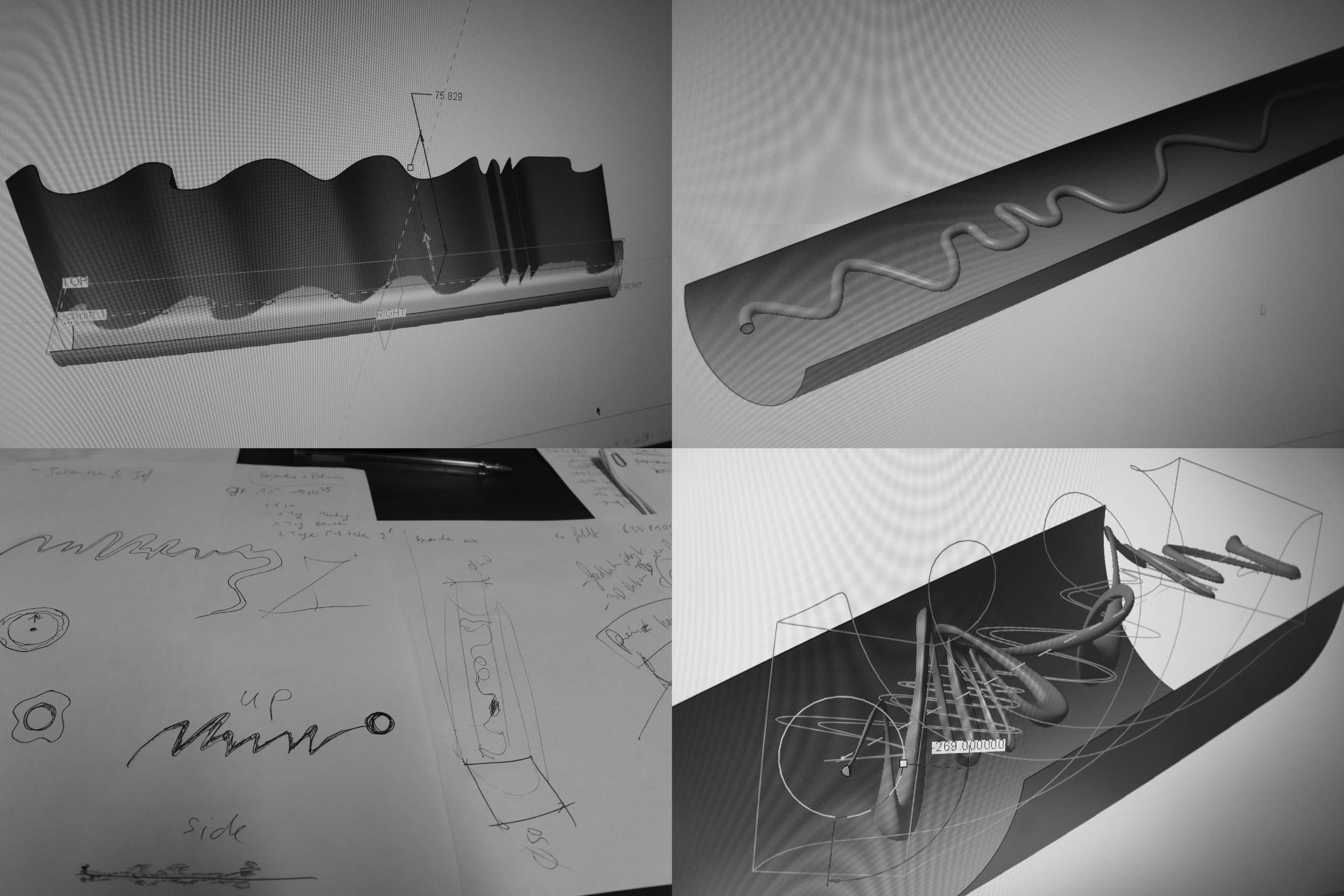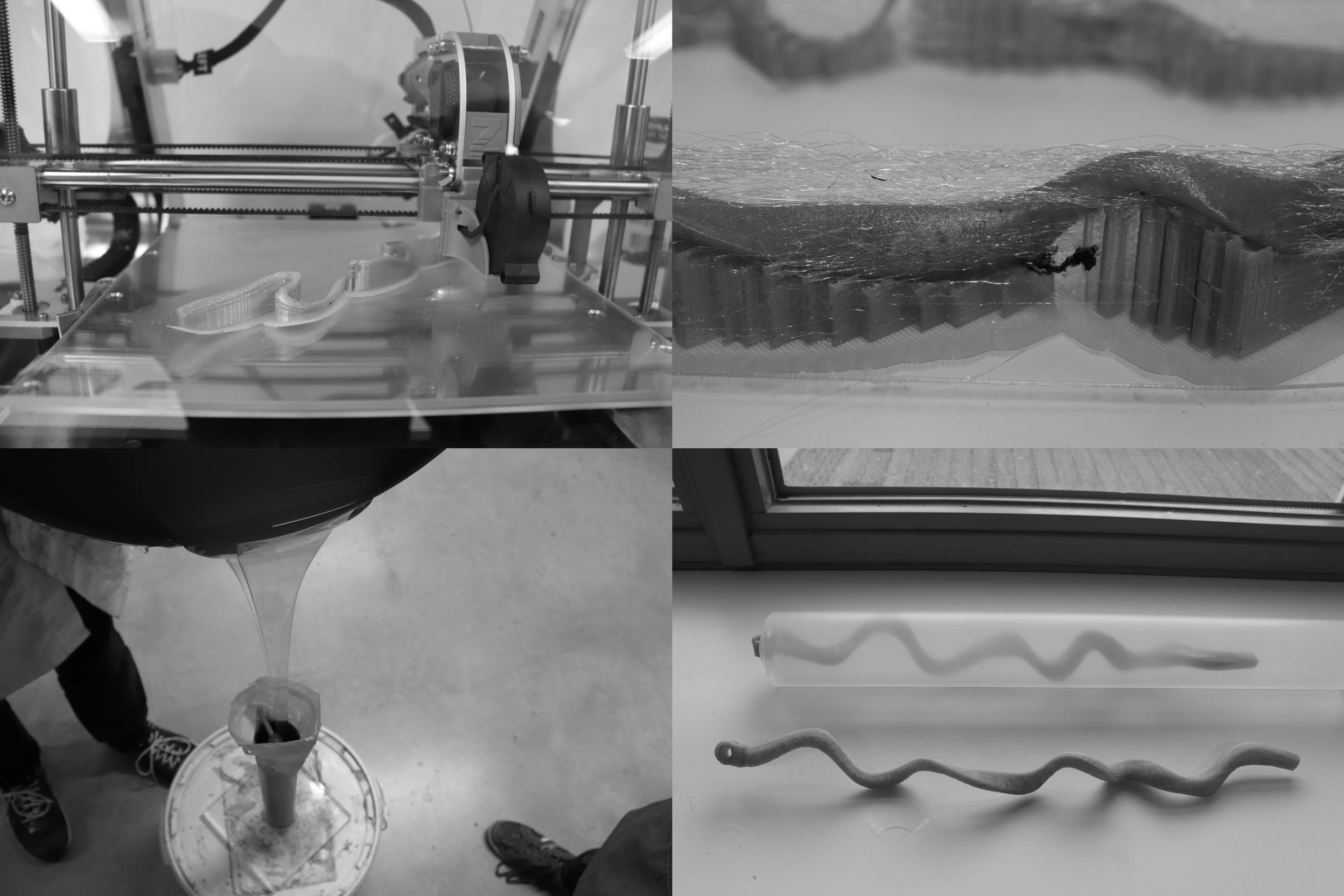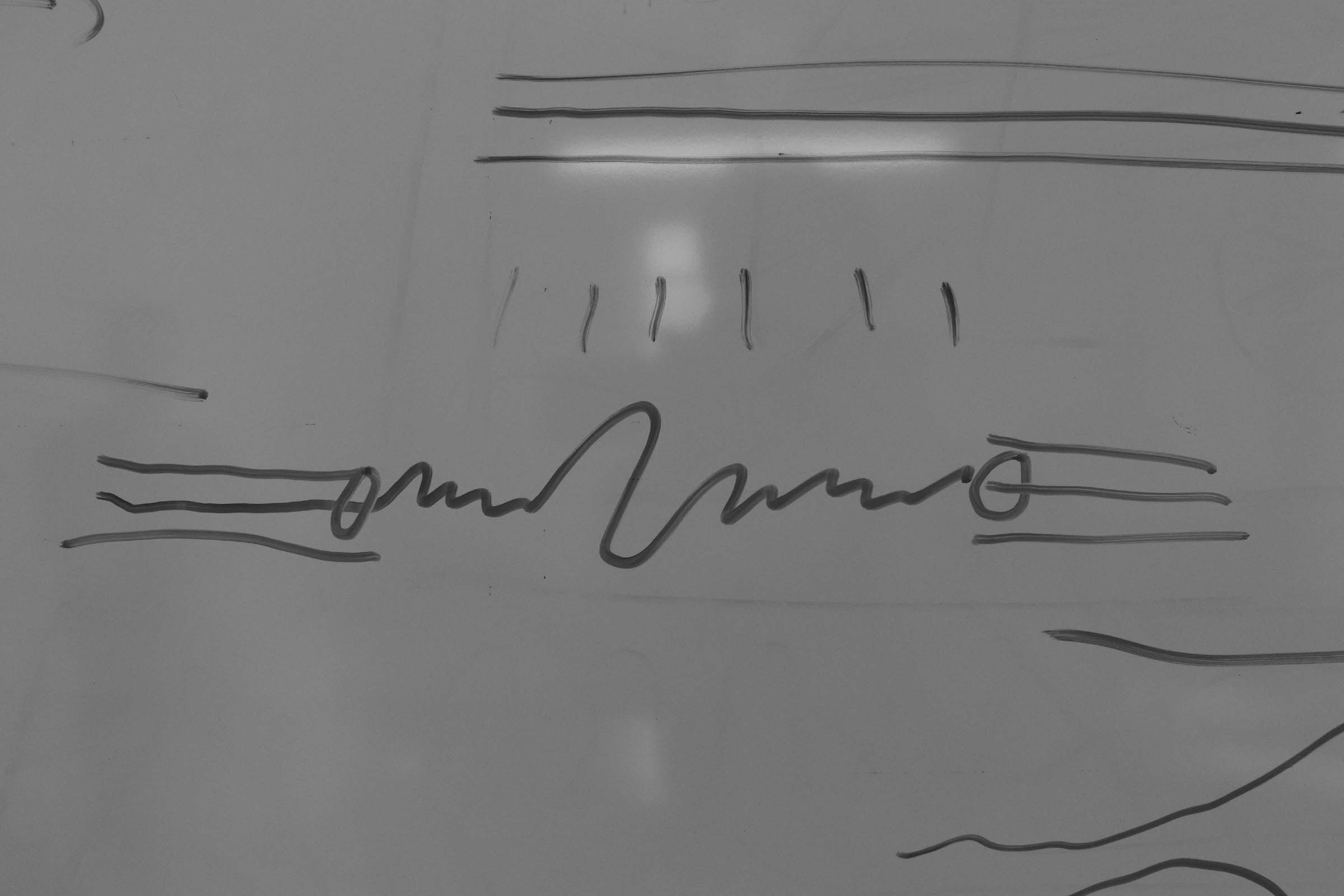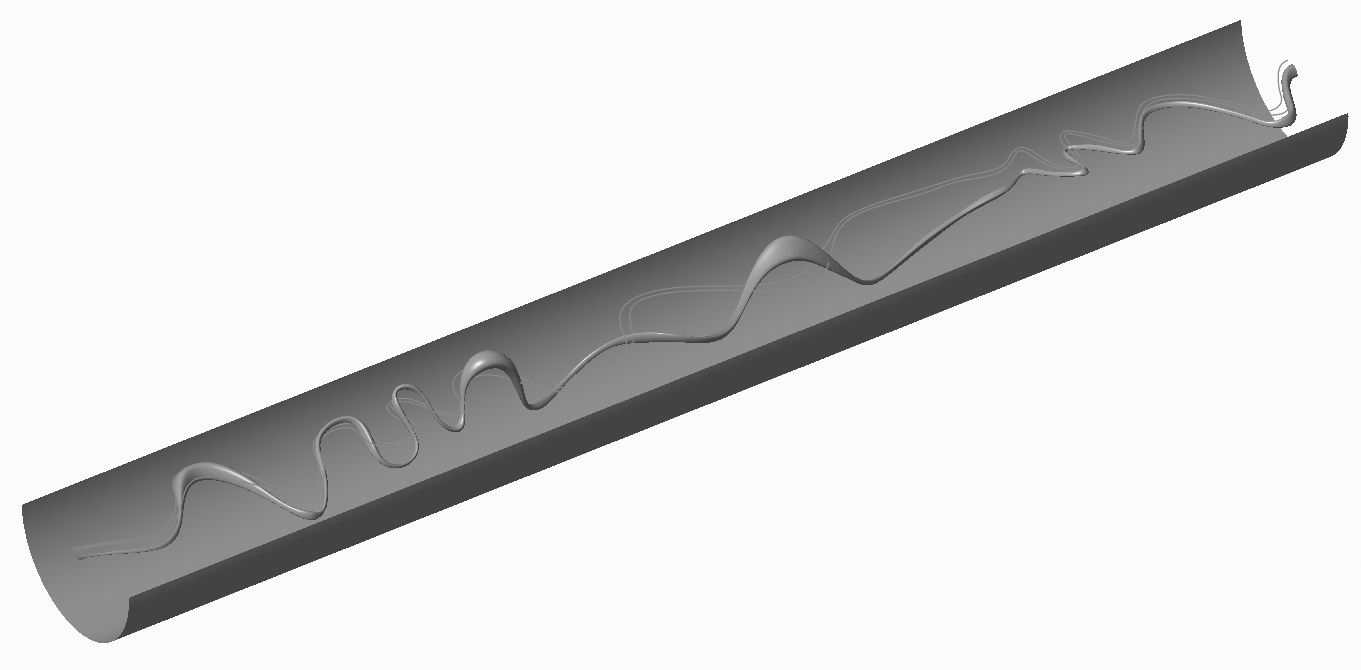Update 2: Adaptive Archi-filament showmodel prototype 22-11-2019
The initial idea was to 3D print the adaptive archi-filament with Haratech in Linz. During the third week of November it was clear that it could be possible to control the design of the filament in a 3D drawing, but not in a mm way of 3D printing. We decided to move on and 3D print the adaptive archi-filament on a larger scale. During the co-creation we developed 3 versions of what the adaptive archi-filament could possibly look like. To simulate and prototype the core idea of the design. With the 3 tests the thinnest one broke after breaking away the support material. During this moment it became very clear that the way to follow up was to create a more conventional way of filament producing. The 2 remaining non broken filaments are used to showcase the show-model idea of the filament. The core of the design shows a moving spiral adaptive filament (3D printed with recycled ocean plastic) with a coating filler of silicon. Plans are set up to meet with a filament producing and research company Wood-K Plus in Linz. Also Aitex in Alcoi will work closely together with Studio Adaptive Skins on creating the archi-filament. The result of the 3D printing in this frame will only be used to produce showmodel(s) of the adaptive archi-filament.
-
Update 1: Marinero shoe design 04-11-2019
The design of the shoe construction was developed in collaboration with Chris van den Elzen and Shapeways Eindhoven. The first stage of the shoe was shown during project Tormenta in 2018. The design of the materials are an ongoing process. The same development was continued with the shoe design. To upgrade the shoe the idea was to make the shoe more conceptual. The main idea was inspired by ship constructions. The nose needed to be designed with a contrasting material to create another layer of texture. The 3D printed part of the heel was produced with SLS and EPS. The nose was made with leather and epoxy finishing. To create the final step a new 3d print technique was needed to be developed. For the shoe nose design the idea was to 3D print with steel material. To restart the original process the Tormenta shoes were 3D scanned by 3D print service in Arnhem. The design of the RVS nose was developed and prototyped in Arnhem. The 30 steel noses were produced by company K3D metal print in Terborg/Holland. Both 3D print companies Shapeways and K3D metal printing sponsored the production of the shoe design parts. Together with local shoe crafters the 15 pairs of Marinero shoes were adjusted and finished medio 2019.
3D printing will be researched to experiment the possibility of creating a new potential fabric technique. The main focus will be more on the stylistic part of the Marinero collection. But several other options will be researched as well. With the Re-FREAM project I can work in hubs where they offer collaboration within the 3D-printing context. I will keep an open mind and see all the possibilities what 3D-printing could offer. Maybe something useful can be developed within the creation of the fibers -> to yarn -> to 3D printing -> to fabric etc. I would like to play around with these techniques and go deeper within the whole process. Connections are made with the TU-Delft on how to sustainable produce sea-based materials towards useful 3D printings. Having these interdisciplinary collaborations and connections could potentially work successfully towards creating fabric innovation. On this page the 3D print process will documented by updates.
